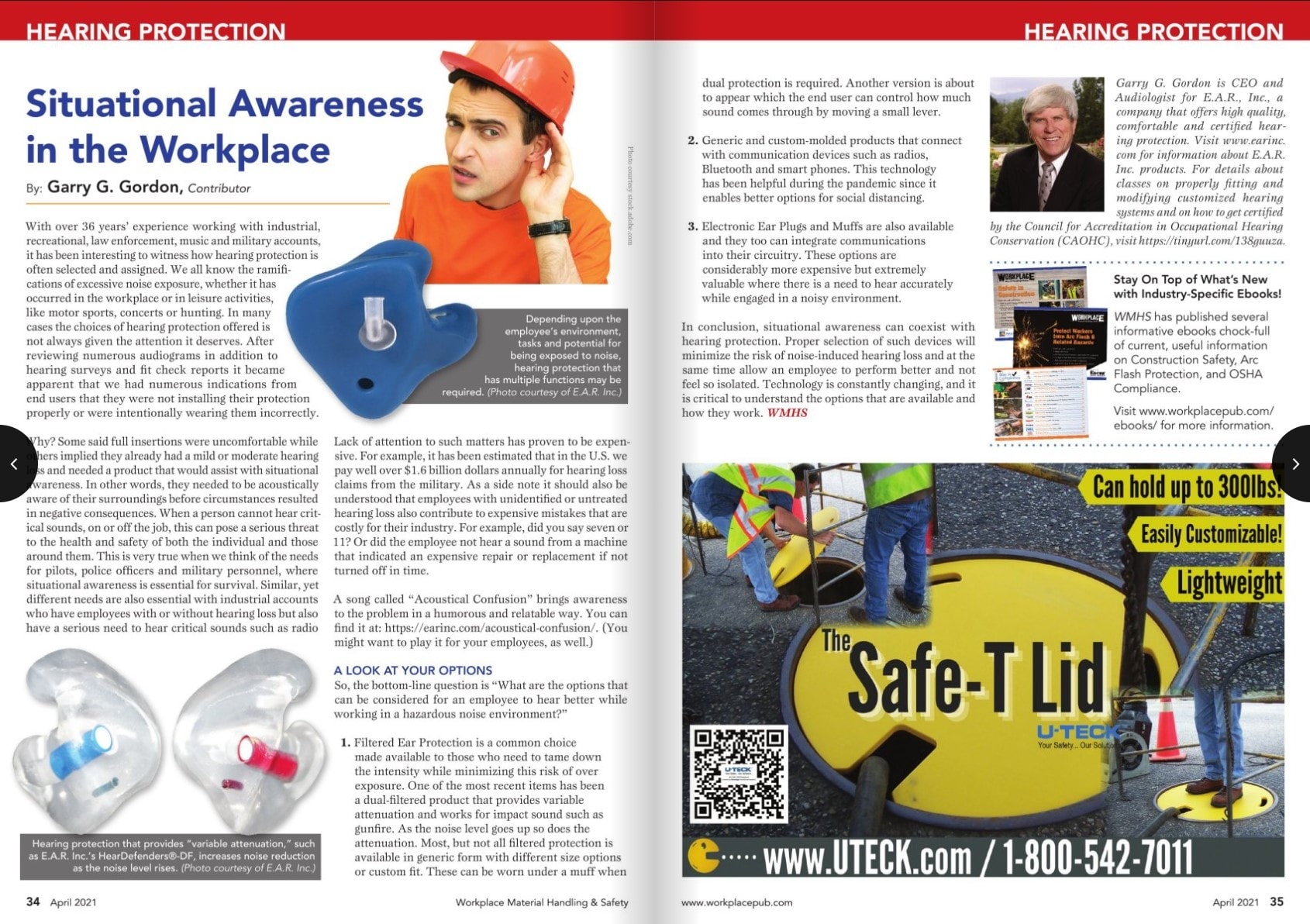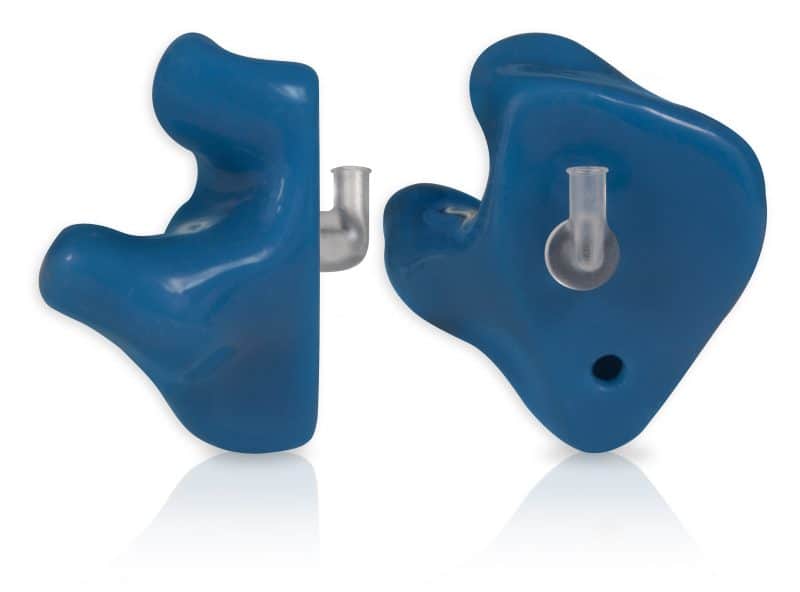- 800.525.2690
- [email protected]
- Mon - Fri: 8:00 - 4:30
Workplace Material Handling & Safety

Situational Awareness In the Workplace
By Garry G. Gordon, Contributor
With over 36 years experience working with industrial, recreational, law enforcement, music and military accounts, it has been interesting to witness how hearing protection is often selected and assigned. We all know the ramifications of excessive noise exposure, whether it has occurred in the workplace or in leisure activities, like motor sports, concerts or hunting. In many cases the choices of hearing protection offered is not always given the attention it deserves. After reviewing numerous audiograms in addition to hearing surveys and fit check reports it became apparent that we had numerous indications from end users that they were not installing their protection properly or were intentionally wearing them incorrectly.

Why? Some said full insertions were uncomfortable while others implied they already had a mild or moderate hearing and needed a product that would assist with situational awareness. In other words, they needed to be acoustically aware of their surroundings before circumstances resulted in negative consequences. When a person cannot hear critical sounds, on or off the job, this can pose a serious threat to the health and safety of both the individual and those around them. This is very true when we think of the needs for pilots, police officers and military personnel, where situational awareness is essential for survival. Similar, yet different needs are also essential with industrial accounts who have employees with or without hearing loss but also have a serious need to hear critical sounds such as radio
Lack of attention to such matters has proven to be expensive. For example, it has been estimated that in the U.S. we pay well over $1.6 billion dollars annually for hearing loss claims from the military. As a side note it should also be understood that employees with unidentified or untreated hearing loss also contribute to expensive mistakes that are costly for their industry. For example, did you say seven or 11? Or did the employee not hear a sound from a machine that indicated an expensive repair or replacement if not turned off in time.
A song called “Acoustical Confusion” brings awareness to the problem in a humorous and relatable way. You can find it at: https://earinc.com/acoustical-confusion/. (You might want to play it for your employees, as well.)
A LOOK AT YOUR OPTIONS
So, the bottom-line question is “What are the options that can be considered for an employee to hear better while working in a hazardous noise environment?”
1. Filtered Ear Protection is a common choice made available to those who need to tame down the intensity while minimizing this risk of over exposure. One of the most recent items has been a dual-filtered product that provides variable attenuation and works for impact sound such as gunfire. As the noise level goes up so does the attenuation. Most, but not all filtered protection is available in generic form with different size options or custom fit. These can be worn under a muff when dual protection is required. Another version is about to appear which the end user can control how much sound comes through by moving a small lever.
2. Generic and custom-molded products that connect with communication devices such as radios, Bluetooth and smart phones. This technology has been helpful during the pandemic since it enables better options for social distancing.
3. Electronic Ear Plugs and Muffs are also available and they too can integrate communications into their circuitry. These options are considerably more expensive but extremely valuable where there is a need to hear accurately while engaged in a noisy environment.
In conclusion, situational awareness can coexist with hearing protection. Proper selection of such devices will minimize the risk of noise-induced hearing loss and at the same time allow an employee to perform better and not feel so isolated. Technology is constantly changing, and it is critical to understand the options that are available and how they work.
Garry G. Gordon is CEO and Audiologist for E.A.R., Inc., a company that offers high quality, comfortable and certified hear-ing protection. Visit www.earinc. corn for information about E.A.R. Inc. products. For details about classes on properly fitting and modifying customized hearing systems and on how to get certified by the Council for Accreditation in Occupational Hearing Conservation (CAOHC), visit https://tinyurtcom/138guuza.

